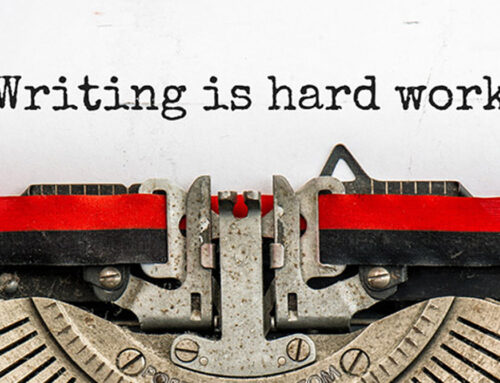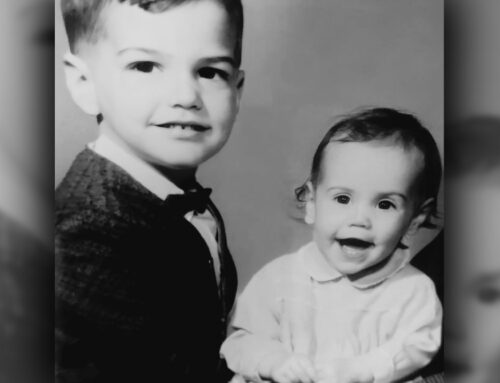Top Ten Tips–How to Give a Good Reading

How to Give a Good Reading (from someone who used to be a terrible reader)
1. Go short, not long.
We’ve all sat through readings that last way too long. Don’t be that author. Choose a short passage you can read slowly instead of a long passage you’ll feel compelled to rush through. Or choose ten poems instead of twenty. This will help you to relax, but it will also show respect for your host and audience. Reading for ten to fifteen minutes, twenty max, means you’ll have more time to chat during Q&A or during your book signing, which is what your audience really wants anyway. (They want to get to know the person behind the words.)
2. What you read matters as much as how you read.
Choose a passage that showcases your strengths as a writer or poet, and allows us to care for your speaker/main character. Many fiction/nonfiction writers read dynamic scenes with lots of dialogue, but we are generally more drawn to the narrative voice of the work, and to the writer’s portrayal of the main character, than to the plot.
3. Be like Amanda.
Everyone remembers Amanda Gorman’s reading at President Biden’s Inauguration, not only because of her beautiful and inspiring poetry but for how she presented herself—including her stunning outfit and her well-rehearsed delivery. When you present yourself with care, you feel good, and your host and audience will be flattered that you took the event seriously. If you come across as slovenly or unprepared, they might feel insulted—and they won’t bother to buy your book.
stunning outfit and her well-rehearsed delivery. When you present yourself with care, you feel good, and your host and audience will be flattered that you took the event seriously. If you come across as slovenly or unprepared, they might feel insulted—and they won’t bother to buy your book.
4. Be “in your body.”
Before arriving at the site of your reading (because once you arrive, you may not have a second to yourself), eat a good meal and take some time to walk, stretch, or exercise. Then, at the beginning of your reading, “feel your feet,” straighten your shoulders, and take a deep breath before beginning. A reading is as much a physical event as well as a creative/intellectual event.
5. Love your words as you read them.
As I wrote about here, you should read your own words with at least the same emotional investment as you would read the words of your favorite author or favorite book. Because if you don’t love your words as you read them, then why would you expect your audience to love them?
6. Style matters.
Modulate your voice naturally (not overdramatically–this is a reading, not a puppet show), both in volume and pitch. Project out to the rear of the room, as if you didn’t have a microphone in front of you. (Don’t mumble, thinking the mic will pick it up and project it–it won’t.) Don’t laugh at your own jokes, emote with your characters, or imitate their voices or accents—you’ll sound like a Monty Python skit—but do alter the cadence and tone so as to match the character’s personality and situation. In other words, be emotionally engaged but not theatrical—it’s a bookstore, not a stage.
 7. Be. Prepared.
7. Be. Prepared.
Don’t just show up, open your book, and read from it. You’re not that cool yet. Plus, you don’t know if the lighting will be good enough for you to read the small print of your book, and it’s easy to lose your place on a single-space page of a paperback. Instead, always have a marked-up “reading copy” of your book with you, with explanatory notes and markers for where you should start and where you should pause, whether to signal the end of a scene, or to allow the audience to “digest” an important sentence or laugh at a funny line. Use your finger to follow the text, as children do when they learn to read, or print out a double-spaced version of your reading selection in large font, so that you don’t lose your place . And for heaven’s sake, don’t read from your phone. The optics are terrible, and the message it sends to your audience is that you didn’t care enough to take the time to prepare for this event.
8. It’s a relationship, not a lecture.
Before, during, and after the reading, take a moment to “read the room.” Obviously, for you, it’s an important event, but it is for them too. They’ve taken the time to show up for it, to demonstrate their support for you, or to enjoy a date with a friend or loved one, or because they’re fans of your work and they finally get to “meet the author.” And for your host, this is important as well. It’s taken a great deal of effort to plan and publicize this event, and they’re hoping it will result in some revenue, bring new people to their store for the first time, and add to their reputation as a place that contributes to the local arts scene. So begin and end your reading by expressing your gratitude to your hosts and to the audience. Acknowledge the importance of everyone’s time. And afterwards, send your host a thank-you card. It may seem trite, but everyone likes to be appreciated, and they’ll remember you as a nice author they would welcome to their store again, when your next book is published.
9. How do you get to Carnegie Hall?
You can’t possibly give a good reading without practicing first. My advice on how to do so may be found here.
Hey, you’re giving a reading! Isn’t this a dream come true? So enjoy it, and if you do, everyone else will enjoy it with you. And remember, whereas you might be nervous about your “performance,” they’re very happy and excited to be there, excited to relive that wonderful childhood experience of listening to someone reading them a story. Think about it—have you ever heard anyone boo after a reading? So enjoy the experience. In other words, don’t bury your head in your book and come up for air at the end. And don’t worry if only a few people show up; those few people will be your fans for life; one of them may end up writing a positive review of your book; and in the long run, it’s better to give a great reading to three people than a bad reading to a hundred people.
Bonus Tip–The Contents of My “Reading Backpack”
Or, What I Brought with Me to Every Reading on my 50-Stop Book Tour.
- The “reading copy” of my book, marked up for pauses and length (10-minute, 15-minute, and 20-minute excerpts).
- Five additional copies of my book (just in case the bookstore sells out); plus a box of books in the trunk of my car.
- Reading glasses, in case the lighting is dim, and for the same reason, a small ‘reading flashlight.”
- Credit-card reader (for when I sell my own books, e.g. when I give a reading at a cafe, pub, or a friend’s house).
- My favorite signing pen, with five back-up (black ink) pens.
- Printed-out hard copies of my reading excerpts (double-spaced, 14 font) on 8 x 11 paper.
- My “writing credit card” that I used exclusively any expenses–gas, accommodations, book purchases, food–incurred before, during, and after every reading. (It’s all deductable.) Alternatively, bring a pouch for receipts.
- An 8”x11” cardboard custom-made printout (I used Vistaprint) and stand, in case I have a signing table and my host doesn’t have a sign or poster.
- A box of thank-you cards (Vistaprint again), with an image of my book cover on the cards, and a book of stamps.
- Hard copies of my own introduction. (Because sometimes the person who introduces me simply read from a Google search or the back of my book, whereas my version included more detail and more recent information, like quotes from reviews of my book.)
- Business cards with my book cover on the front (Vistaprint).
- Water bottle.
Do any authors or reading attendees out there have additional tips? Please comment below, and thanks!





Love these tips! And the contents of your backpack really taught me some things I’ll remember should I ever be fortunate enough to go on a book tour. (You have to write a book first, right?)
Ah, but you have! :-)